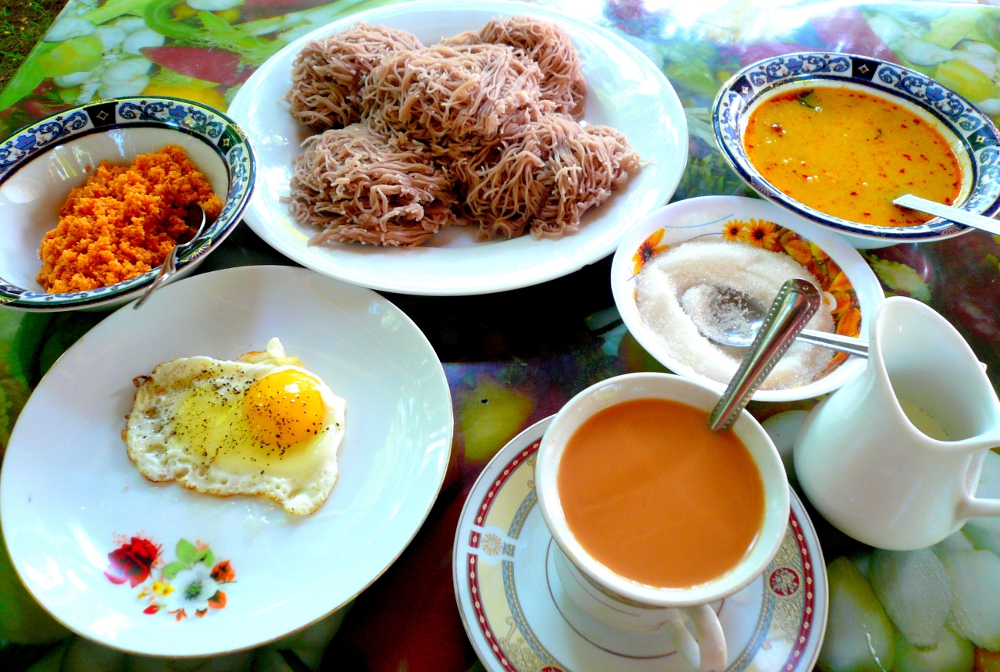THE CAFES OPEN at seven or sometimes even five or six, and by nine or ten breakfast is over. The hotels sell tourist breakfasts well into the afternoon, but the real Sri Lankan stuff is much better.
I eat my breakfast at a cafe on the seafront. From the front it looks like little more than a snack shop, but inside it’s spacious and has an outside dining area that backs right onto the ocean. The tables are made of plastic, the walls are flaking, and flies buzz around the sloppy remains of food on the floor, but I don’t come for the décor.
